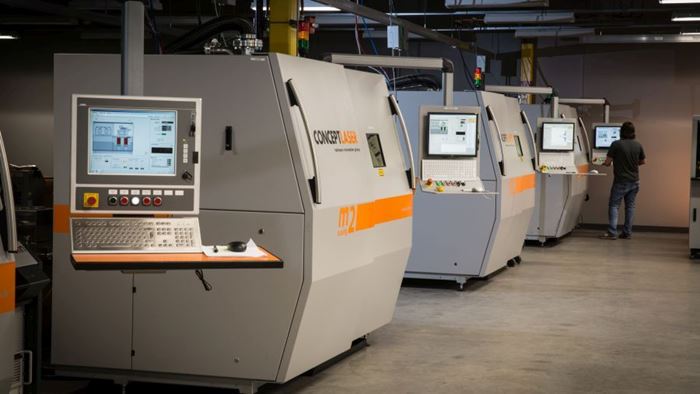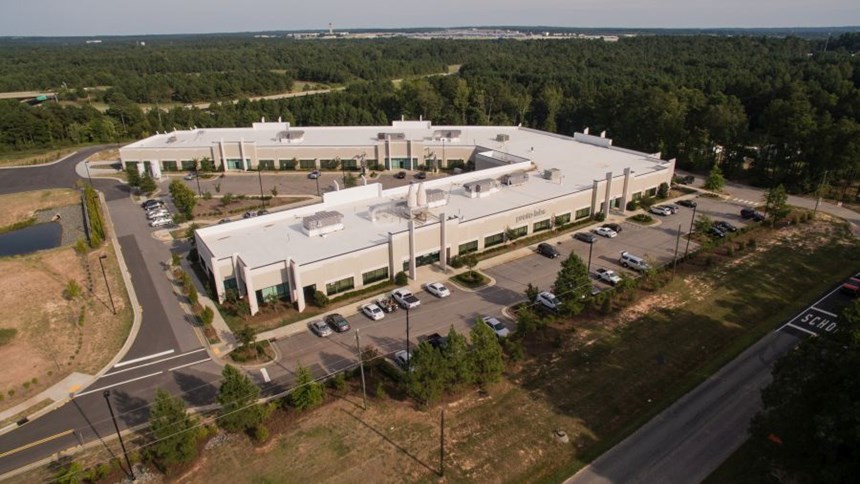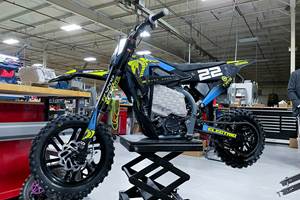Proto Labs Opens New Additive Manufacturing Facility
The new site houses 70 industrial 3D printing machines to provide AM services via e-commerce.
Share
Read Next
Proto Labs recently opened a new 77,000-square-foot additive manufacturing facility in Cary, North Carolina. The company held an open house last week to debut the facility—an appropriate event for a new industrial site. In a way, however, an open house is out of step with the nature of the company’s business and the way this facility will be used. The typical Proto Labs customer will never see the company’s manufacturing resources here and might not even talk to an employee.
“We are a digital manufacturer,” company President and CEO Victoria Holt explained in her presentation to guests. She used the term “e-commerce” as well. As contrasted with other companies providing manufacturing services, fully 100 percent of Proto Labs’ business comes through the online front door enabling customers to upload CAD models and initiate the manufacturing they need. This model has been proven in the company’s CNC machining services, and is now being applied to additive manufacturing as well. (Another type of manufacturing the company also performs in this way is plastics molding.)
While the company’s contract machining work is performed in Minnesota, the additive operation is located in North Carolina because the core of this division came from the company’s 2014 acquisition of 3D printing service provider FineLine Prototyping. (A later acquisition brought AM capacity in Europe as well.) The basic approach to delivering parts within short lead times is similar within each of the separate process areas. That is, on-site staff members perform some manual steps to prepare jobs for production (repairing incomplete models, for example), while software developed by the company automates various steps involved in initiating that production, including scheduling. At the Cary facility, this scheduling includes not only finding open capacity on an appropriate 3D printer for a given job, but also in many cases finding open real estate within a particular build in the same material as that job, so the new part can be nested into a build already scheduled for maximum efficiency.
3D printing analyst and consultant Terry Wohlers spoke at the event, discussing the state of additive manufacturing market growth and recent AM-related developments to an audience that included many who were evaluating using additive manufacturing for the first time. Commenting on the size and organization of the Proto Labs facility and the number of industrial 3D printers here, he said, “I can't name another company worldwide that that has what they have here today.”
The largest share of the site’s 70 additive machines consists of machines making parts through stereolithography, the process with which FineLine began and in which the company specialized. The new site also has 10 selective laser sintering (SLS) machines from 3D Systems for making rugged polymer parts, as well as 13 powder-bed metal additive manufacturing machines from Concept Laser—eight in the small M1 size and five in the larger M2 size. In both the SLS and metal additive manufacturing areas, the available open floor space and utility service leave significant room for additional growth. At one point in her talk, Holt suggested 140 machines was a reasonable expectation for the eventual scale of this site. Already there are plans to add to the number of metal machines.
Related Content
Understanding HP's Metal Jet: Beyond Part Geometry, Now It's About Modularity, Automation and Scale
Since introducing its metal binder jetting platform at IMTS in 2018, HP has made significant strides to commercialize the technology as a serial production solution. We got an early preview of the just-announced Metal Jet S100.
Read MoreNew Electric Dirt Bike Is Designed for Molding, but Produced Through 3D Printing (Includes Video)
Cobra Moto’s new all-electric youth motocross bike could not wait for mold tooling. Parts have been designed so they can be molded eventually, but to get the bike to market, the production method now is additive manufacturing.
Read MoreMultimaterial 3D Printing Enables Solid State Batteries
By combining different 3D printing processes and materials in a single layer, Sakuu’s Kavian platform can produce batteries for electric vehicles and other applications with twice the energy density and greater safety than traditional lithium-ion solutions.
Read MoreHow Norsk Titanium Is Scaling Up AM Production — and Employment — in New York State
New opportunities for part production via the company’s forging-like additive process are coming from the aerospace industry as well as a different sector, the semiconductor industry.
Read MoreRead Next
At General Atomics, Do Unmanned Aerial Systems Reveal the Future of Aircraft Manufacturing?
The maker of the Predator and SkyGuardian remote aircraft can implement additive manufacturing more rapidly and widely than the makers of other types of planes. The role of 3D printing in current and future UAS components hints at how far AM can go to save cost and time in aircraft production and design.
Read More4 Ways the Education and Training Challenge Is Different for Additive Manufacturing
The advance of additive manufacturing means we need more professionals educated in AM technology.
Read MoreHybrid Additive Manufacturing Machine Tools Continue to Make Gains (Includes Video)
The hybrid machine tool is an idea that continues to advance. Two important developments of recent years expand the possibilities for this platform.
Read More























